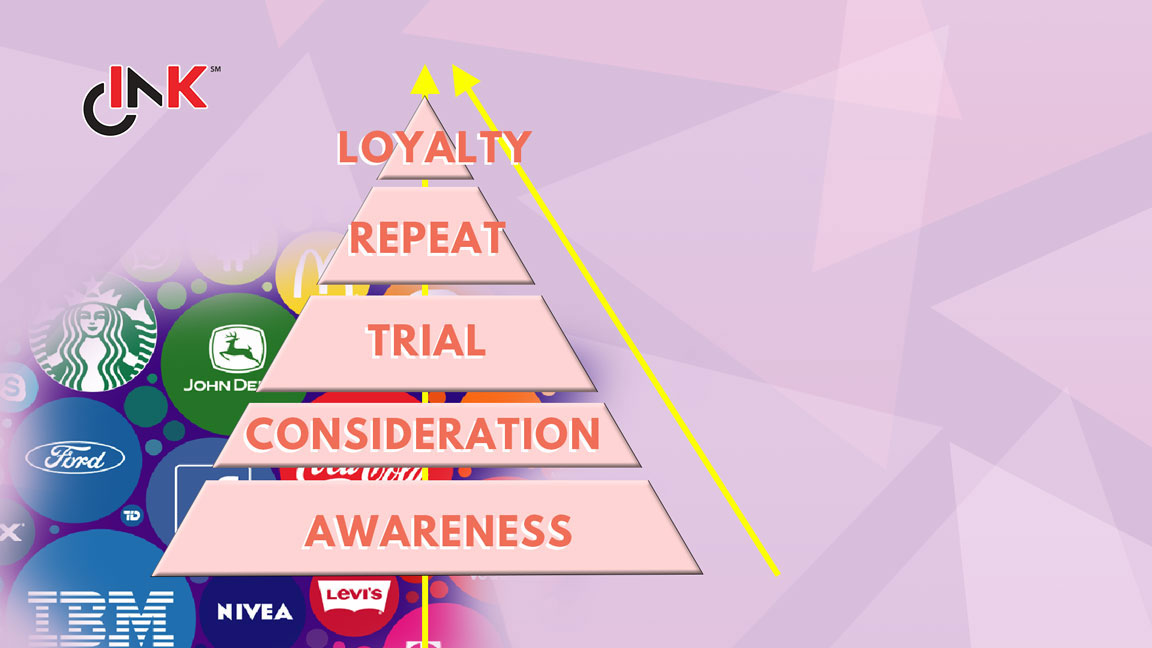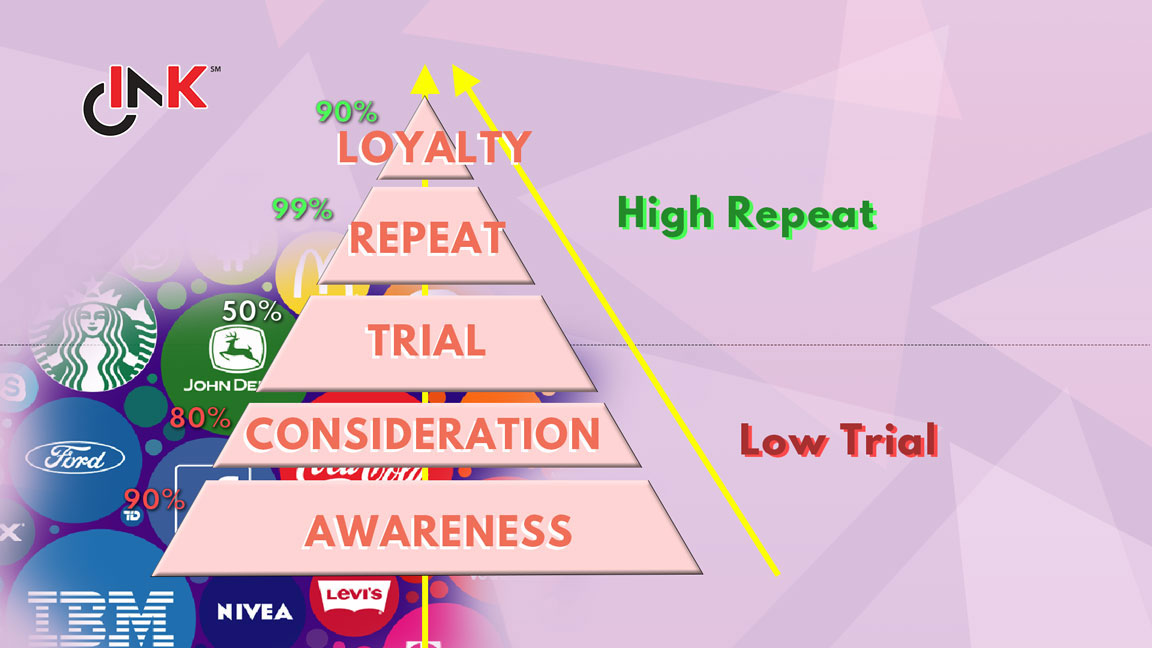
Even if you’re a non-believer of academic textbook theories, you would surely like to know about how this theory can be practically applied in the field.
There are many tools in marketing with fancy jargon and theoretical concepts, but little practical use in reality.
However, the brand pyramid is a rare exception.
It allows businesses, especially marketers to identify the growth opportunities by clarifying where your brand stands and what is needed to progress it in a specific market.
What is a Brand Pyramid?
A brand pyramid has five building blocks represented in a visual format to give marketers an instant view of the behavioral conversions of customers at each level.
Awareness: Know your brand and remember the name of your brand.
Consideration: Consider your product as one of the acceptable choices among many other products.
Trial: Have made the first purchase.
Repeat: Have made a repeated purchase.
Loyalty: Consistently purchase and prefer your brand to other brands.

How Does the Brand Pyramid Work?
The ideal way to construct your brand pyramid is with market research, which also includes constructing the brand pyramids for your competitors, especially the market leader.
This gives you a sense of your gap vs. the benchmarks.
Each level within the brand pyramid highlights the successful conversion to the next level of consumer behavior.
Any significant drop off point thus signals weaknesses and opportunities available in the market for your brand.

The above figure illustrates the working of the brand pyramid. For ease of explanation, let’s assume the sample size is 100 consumers, for your brand pyramid.
Awareness: 90% awareness means 90 people out of the 100 interviewed consumers have heard about your brand.
Consideration: 80% conversion means 80% of the 90 people in the Awareness block, i.e. 72 people did consider your product as one of the acceptable choices among many other products.
Trial: Only 50% of the people, who considered your product, i.e. 36 people, made the first purchase.
Repeat: Almost all the people (99%) who did trial your product made a repeated purchase.
Loyalty: 90% of people who have repeatedly purchased your brand go on to consistently purchase and prefer your brand to other brands.
Clearly, you have an excellent product on hand, with such high Repeat and Loyalty scores. The gap is thus the relatively low 50% conversion from Consideration to Trial.
A case of low distribution?
Or, a case of running a wrong promotion which discourages Trial, e.g. twin-pack promotions?
Worth doing a massive sampling drive, considering your brand has such a high conversion to Repeat after one Trial?
All these are for you to analyze and decide. Clearly, the brand pyramid has guided the marketers to zoom in on the area where their brand needs improvement in its operations.
How to Use the Brand Pyramid?
A brand may be well established in one market, but may just be starting up in another market. It makes sense to use the brand pyramid to help design the right sales and marketing program.
Even if you do not conduct big-scale market research, you can always do a quick online survey to give you a sense of where your brand is.
This metaphorical journey will help you analyze the gap (i.e. sharp drop-off) and then design and execute the appropriate measures. Tactics to improve performance will differ greatly depending on the level at which there is a concern.
For instance, if a brand has a miserable awareness score, there is no point in doing a reward program or price promotion. Focus on getting more people to be aware of your brand.
And, if a brand has a brilliant awareness score, but with a sharp drop in consideration, then it could be the communication of product benefits that does not resonate with the target consumers or the communication is reaching the wrong consumers.
If a brand has great awareness and consideration scores, but very little trials, then it could be due to pricing, or distribution issues.
If a brand has a high trial score, and then very little repeat, likely it is due to the product performance not meeting the expectation. A mismatch with the promise, or the price?
Brand Pyramid Gives You Clarity
The examples and the potential causes above are non-exhaustive, but you get the drift.
The clarity in the brand pyramid goes a long way in helping marketers design effective sales and marketing programs.
There are many types of sales and marketing programs one can do, from price-off, BOGOF, multi-buy, gift points, sampling, coupon, contest, premiums, variety pack to even cross-category multi-buy. Knowing where your brand is in the brand pyramid helps you choose the right program and maximize the impact of your A&P.




